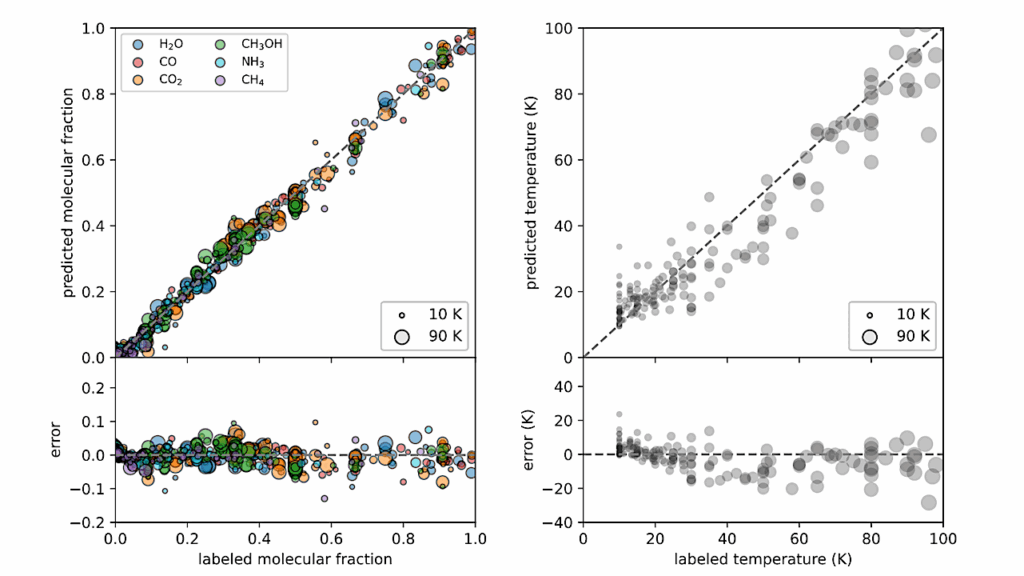Mapping Vinyl Cyanide and Other Nitriles in Titan's Atmosphere Using ALMA

Vinyl cyanide (C2H3CN) is theorized to form in Titan’s atmosphere via high-altitude photochemistry and is of interest regarding the astrobiology of cold planetary surfaces due to its predicted ability to form cell membrane-like structures (azotosomes) in liquid methane.
In this work, we follow up on the initial spectroscopic detection of C2H3CN on Titan by Palmer et al. (2017) with the detection of three new C2H3CN rotational emission lines at submillimeter frequencies. These new, high-resolution detections have allowed for the first spatial distribution mapping of C2H3CN on Titan. We present simultaneous observations of C2H5CN, HC3N, and CH3CN emission, and obtain the first (tentative) detection of C3H8 (propane) at radio wavelengths. We present disk-averaged vertical abundance profiles, two-dimensional spatial maps, and latitudinal flux profiles for the observed nitriles. Similarly to HC3N and C2H5CN, which are theorized to be short-lived in Titan’s atmosphere, C2H3CN is most abundant over the southern (winter) pole, whereas the longer-lived CH3CN is more concentrated in the north.
This abundance pattern is consistent with the combined effects of high-altitude photochemical production, poleward advection, and the subsequent reversal of Titan’s atmospheric circulation system following the recent transition from northern to southern winter. We confirm that C2H3CN and C2H5CN are most abundant at altitudes above 200 km. Using a 300 km step model, the average abundance of C2H3CN is found to be 3.03±0.29 ppb, with a C2H5CN/C2H3CN abundance ratio of 2.43±0.26. Our HC3N and C2H3CN spectra can be accurately modeled using abundance gradients above the tropopause, with fractional scale-heights of 2.05±0.16 and 1.63±0.02, respectively.
J. C.-Y. Lai, M. A. Cordiner, C. A. Nixon, R. K. Achterberg, E. M. Molter, N. A. Teanby, M. Y. Palmer, S. B. Charnley, J. E. Lindberg, Z. Kisiel, M. J. Mumma, P. G. J. Irwin
(Submitted on 17 Oct 2017)
Comments: Accepted for publication in the Astronomical Journal
Subjects: Earth and Planetary Astrophysics (astro-ph.EP)
Cite as: arXiv:1710.06411 [astro-ph.EP]
(or arXiv:1710.06411v1 [astro-ph.EP] for this version)
Submission history
From: James Lai
[v1] Tue, 17 Oct 2017 17:40:08 GMT (847kb,D)
https://arxiv.org/abs/1710.06411
Astrobiology, Astrochemistry








